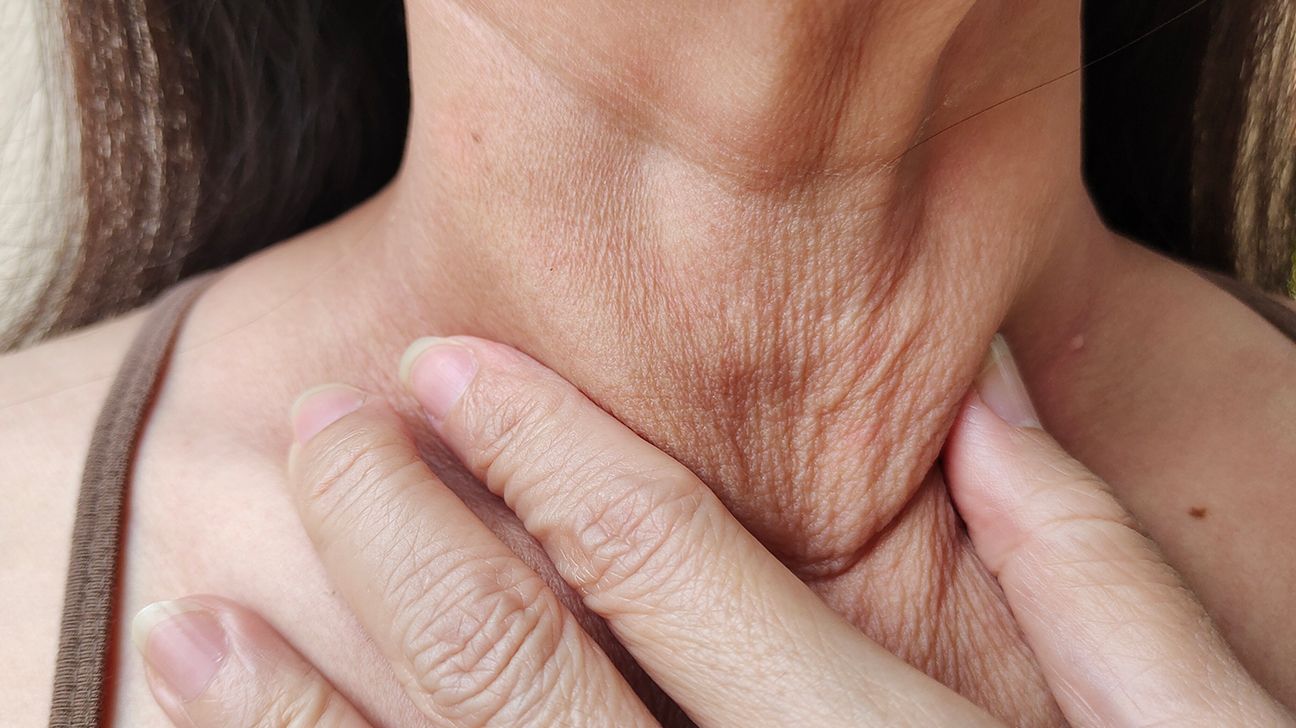“Ozempic neck” refers to the appearance of excessive or aging skin on your neck. Although this may occur after using Ozempic, it results from losing significant weight or losing weight quickly.
Ozempic is approved by the Food and Drug Administration (FDA) for the following uses:
- to improve blood sugar management in adults who have type 2 diabetes, when used along with diet and exercise
- to reduce the risk of major cardiovascular events (those related to the heart and blood vessels, such as heart attack, stroke, and death) in adults who have type 2 diabetes and cardiovascular disease
- to reduce the risk of complications from chronic kidney disease in adults with type 2 diabetes
The FDA has not approved Ozempic for weight loss or long-term weight management. Ozempic is also not approved as a treatment for people who have type 1 diabetes.
Read on to learn more about the effect that people call “Ozempic neck.”
Glucagon-like peptide-1 receptor agonists (GLP-1 RAs) are a group of drugs that help manage blood sugar levels. Rapid weight loss resulting from the use of some GLP-1 RAs can lead to a different appearance. After treatment with a GLP-1 RA, a person who has lost weight may also look ill or older than before they lost weight.
Rapid weight loss has many possible outcomes. One may be the appearance of looking older than people of a similar age. This change in appearance is usually due to a reduction in fat as a result of losing weight.
For example, a person who is losing weight may have less fat on their neck than before. Having less fat in certain areas of the body often causes the skin to become looser, which can lead to an older-looking appearance.
In some cases, after weight loss, people may regain some of the weight they lost. Sometimes, body fat may not return or may not be distributed the way it was before the weight loss. So an area of the body may not look the same as it did before. This means certain areas of the body, such as the neck, may have an older-looking appearance that doesn’t go away.

No, it shouldn’t. Neck pain has not been reported as a side effect of Ozempic in studies of the drug.
Some people seek help to renew or refresh their appearance after medical weight loss or other weight loss.
Some find options through plastic surgeons. It’s recommended that people also consult other healthcare professionals, including specialists in weight loss (or medical weight loss) and endocrinologists.
Dermatologists may also be helpful, as they’re knowledgeable about the structure and function of the skin, as well as skin diseases. They might be able to recommend products that could help.
Once they understand your goal, this team of healthcare professionals may be able to make recommendations specific to your medical conditions and history.
Ozempic is a GLP-1 RA, a type of drug that helps manage blood sugar. Although Ozempic is not approved specifically for weight loss, some people experience weight loss when using it.
In some cases, people experience “Ozempic neck,” which is the appearance of looking older, especially compared with people of a similar age. This may happen because having less fat on the neck can cause skin to become looser, contributing to an older-looking appearance.
If you choose to correct “Ozempic neck,” you might want to consult a team of healthcare professionals. Different specialists may be able to make various recommendations specific to your medical history and conditions.
Disclaimer: Healthline has made every effort to make certain that all information is factually correct, comprehensive, and up to date. However, this article should not be used as a substitute for the knowledge and expertise of a licensed healthcare professional. You should always consult your doctor or another healthcare professional before taking any medication. The drug information contained herein is subject to change and is not intended to cover all possible uses, directions, precautions, warnings, drug interactions, allergic reactions, or adverse effects. The absence of warnings or other information for a given drug does not indicate that the drug or drug combination is safe, effective, or appropriate for all patients or all specific uses.






